You may not find this terribly rewarding unless you're included here, so this is a good time for casual and random browsers to turn back before they get too caught up in the sweep and majesty of the proceedings and can't let go.
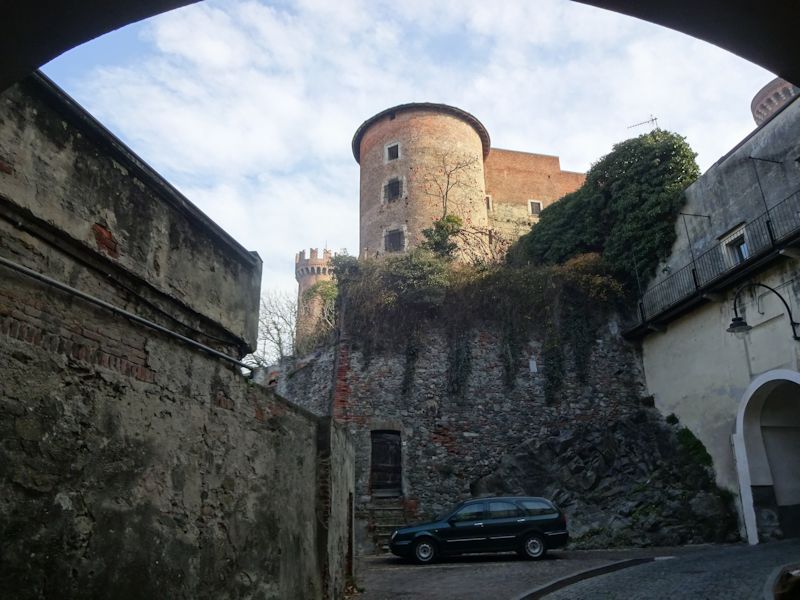
We've driven down the state road, the SS26, avoiding the autostrada to see some of the local villages, and upon entering Ivrea from the north we've found ourselves parking under this great whacking castle. What luck.

Ivrea is a venerable settlement -- Celts were apparently here in the 5th century BC, the Romans in about 100 BC in their military outpost controling traffic over the Alps from the north, and Lombards and the Franks, who made the place a regional capital likewise because of its strategic location straddling the river that runs down from the Aosta Valley -- but not too much of that antiquity remains, as far as we could see.
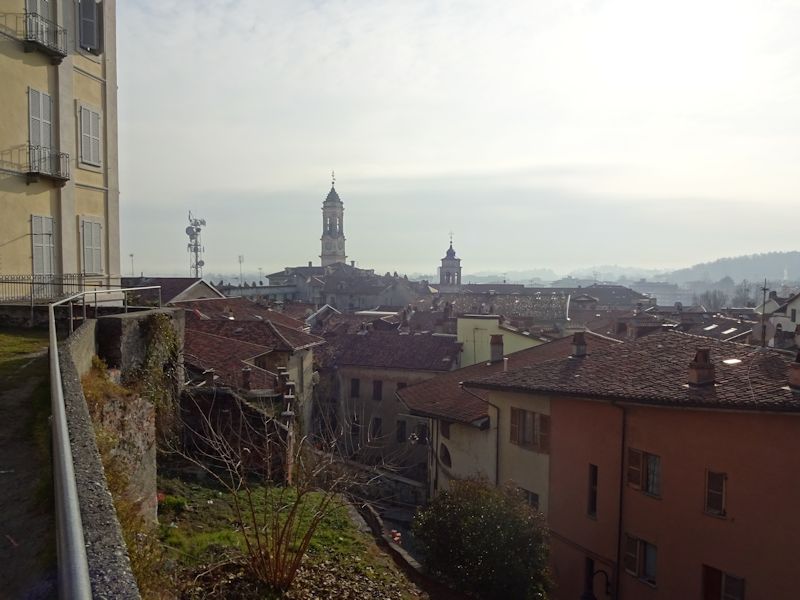
There is a 1st century Roman theatre outside of town, but the town itself, with about 25,000 residents, seems to be mainly a northern Italian industrial town, comfortable in its own way but by no means a "living museum" like, for example, San Gemignano, or Assisi.
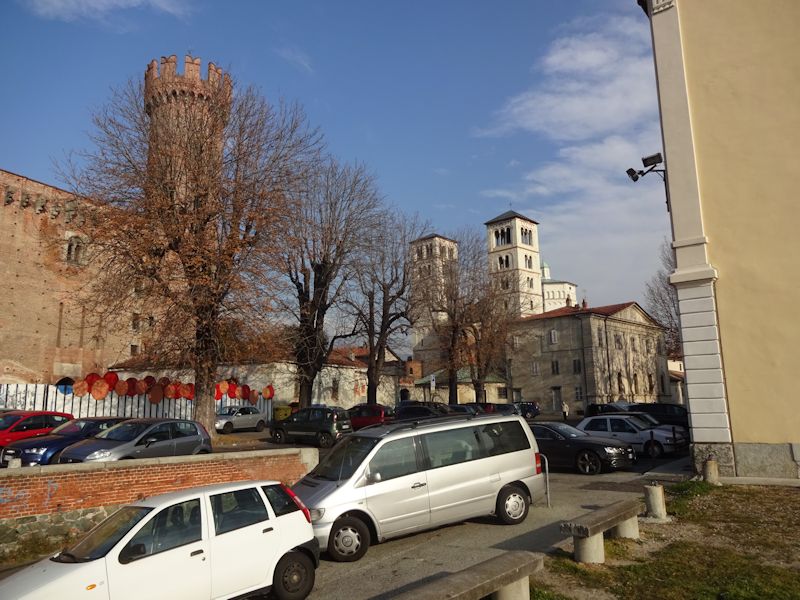
There was a brief interlude around AD 1000 when a hard man named Arduin, lord of the March of Ivrea, got himself crowned King of Italy (which was then a German title) but was ousted by the other King of Italy, the Emperor Henry II, and then spitefully destroyed a number of cities near here like Vercelli and Novara, and joined a monastery to contemplate his sins.
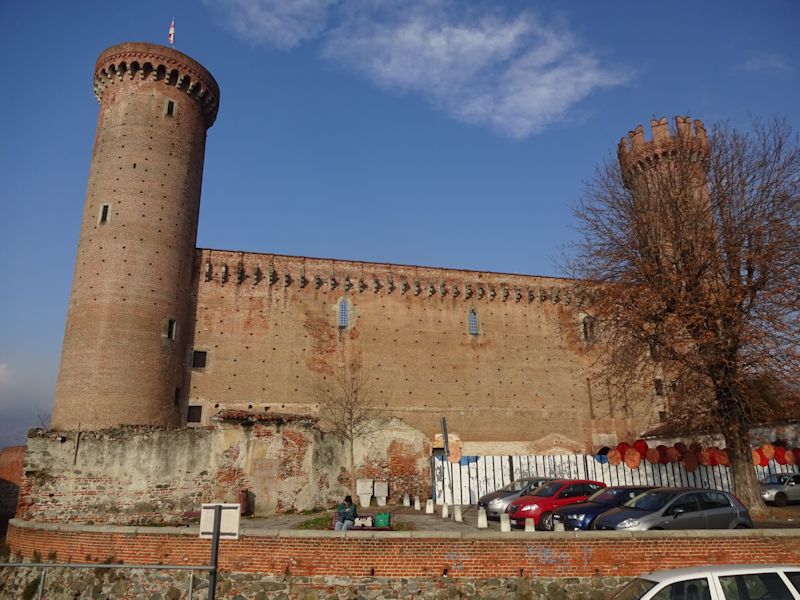
Ivrea was, like many northern cities, a free commune in the 12th century, but was joined to Emperor Frederick II's northern properties in the 13th. The local bishops, always attentive to business opportunities, contested for dominance with the Marquis of Monferrato and the Savoy family over the mountains, well into the 14th century. But in 1356 Count Amadeus VI of Savoy, the "Green Count", acquired Ivrea and built this attractive fortress to celebrate his ownership. (Eugene Cox, The Green Count of Savoy: Amadeus VI and transalpine Savoy in the fourteenth century (1967), is a wonderful book.)

At the top of the city, we have the Savoyard fortress and the cathedral cheek by jowl, as it were.
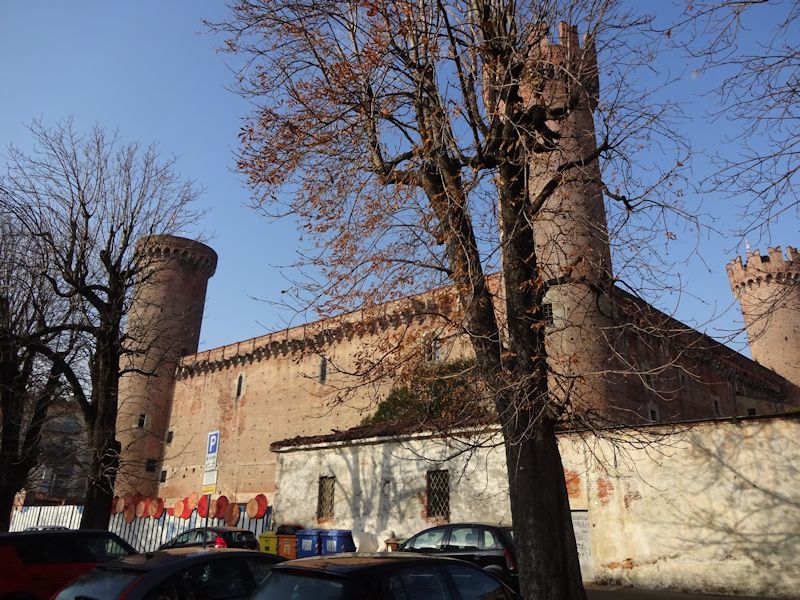
Alas, in 1676, the castle, then used as a huge gunpowder store, was struck by lightning and exploded, and was never thoroughly repaired (the era of useful castles being well over by then). The usable parts of it served as a prison for a time (like most surviving castles) and it now hosts exhibitions. It was closed when we were there.
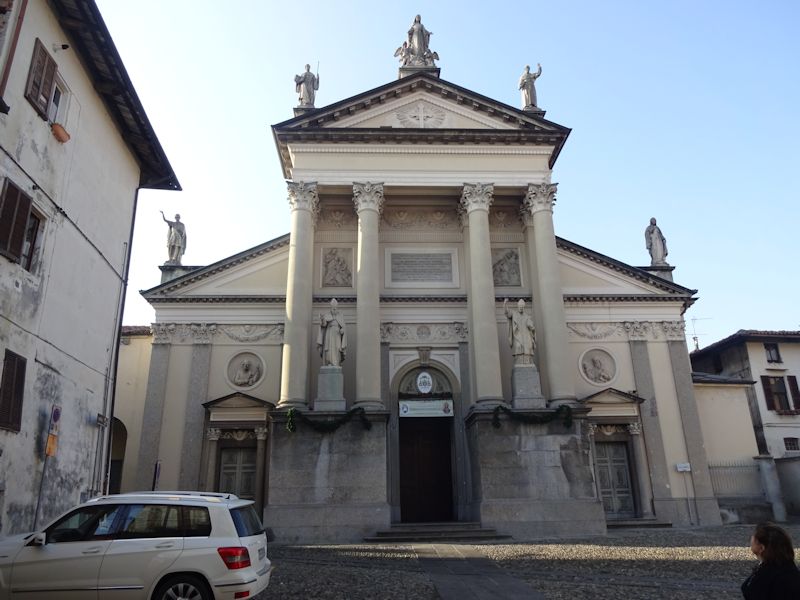
The Cathedral of Santa Maria Assunta. First, here at the top of the hill, there was a Roman temple, then a 4th century church, then from AD 1000 a Romanesque church (the bell towers, crypt, and some of the apse remain), and then from 1785 a Baroque cathedral with a 19th century Neo-Classical façade. It looks a bit like something from a Corsican necropolis, but much bigger.
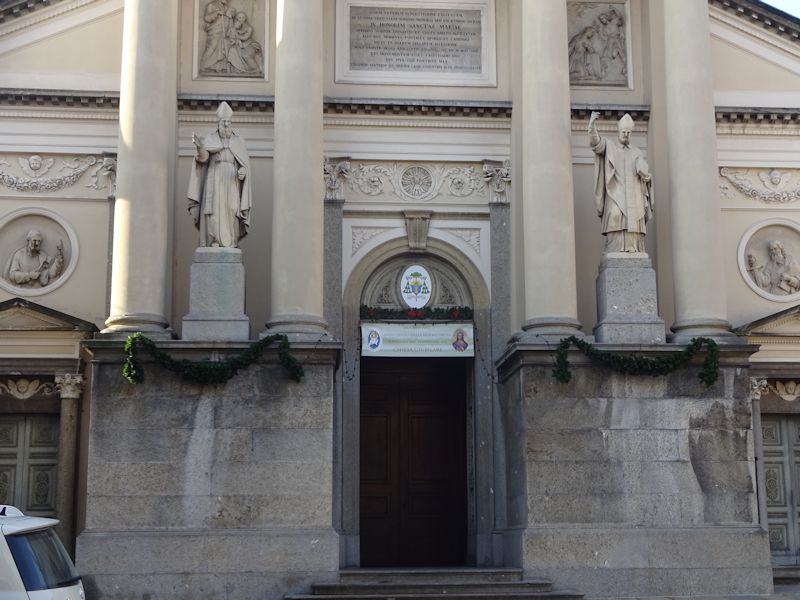
It's hard to tell what those gentlemen are gesturing, but they don't look friendly.

The side aisle, leading to a raised ambulatory running around behind the chancel

The nave with interesting four-pillar columns, with both round and square pillars
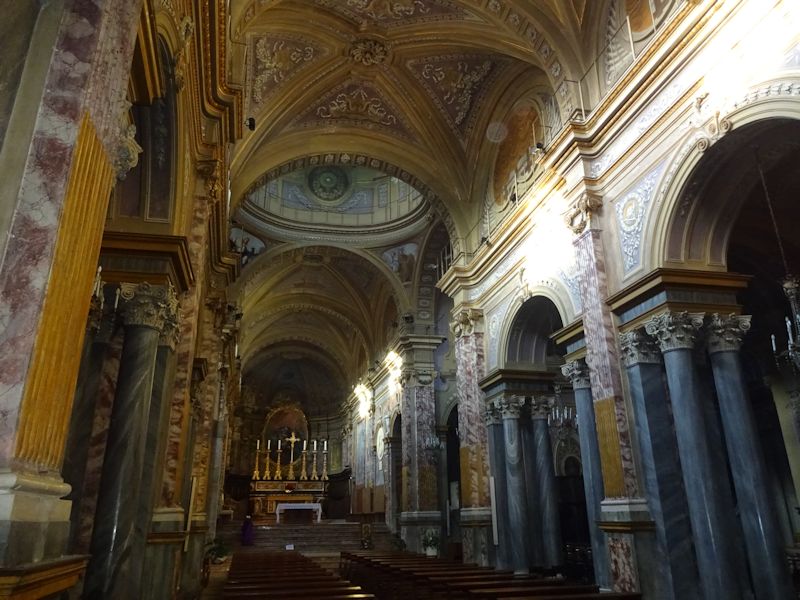
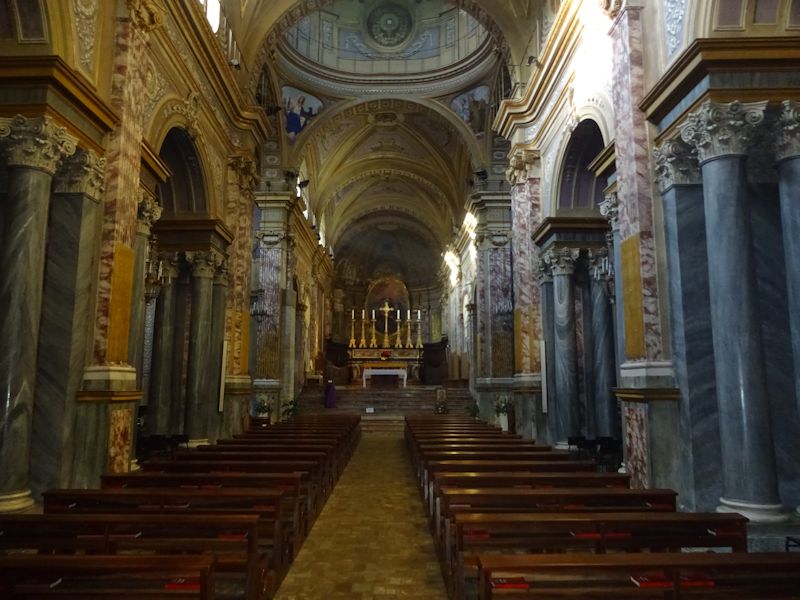
The presbytery and choir within the apse

Side chapels, not always subtle
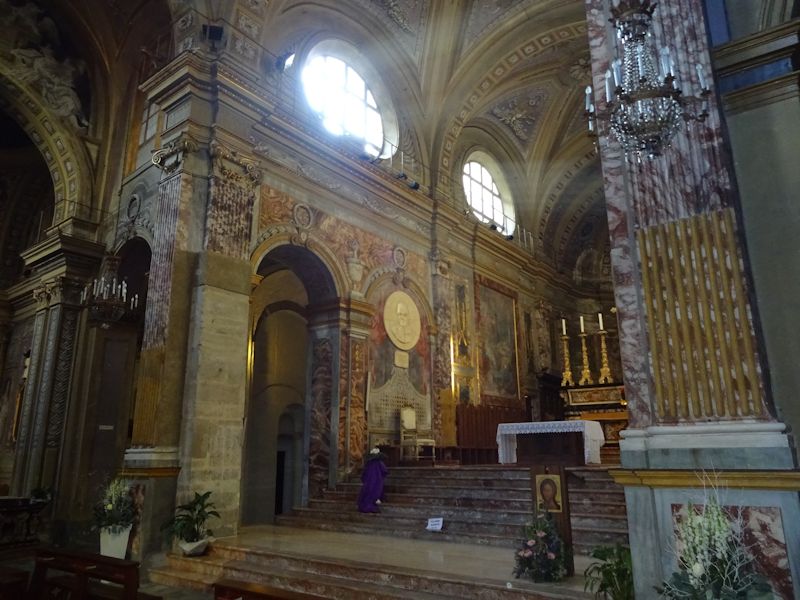
The raised chancel with choir seats behind the altar
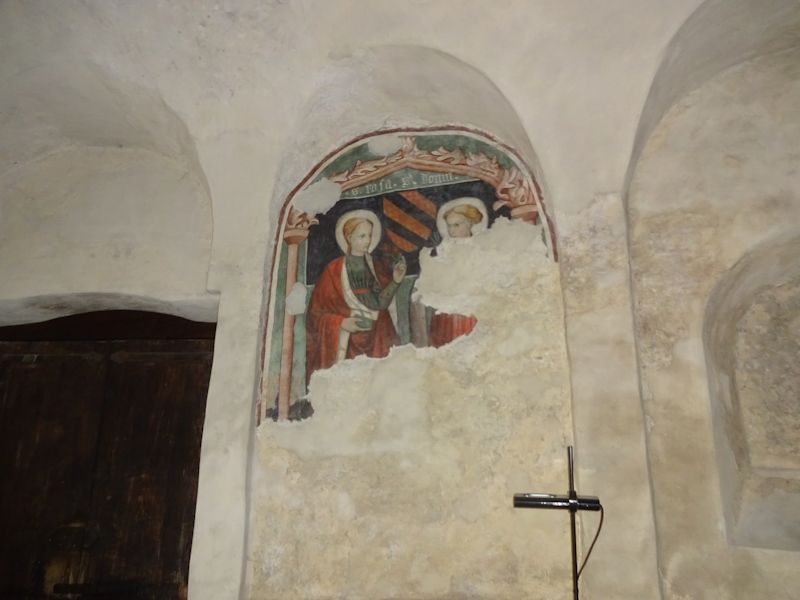
The remains of interesting frescoes in the ambulatory round the back
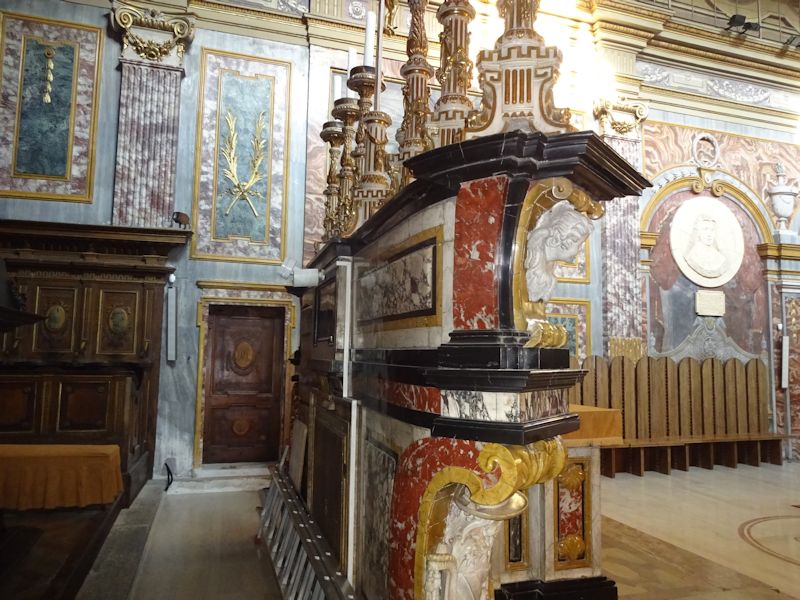
The choir behind the altar, with a ladder ready for anything
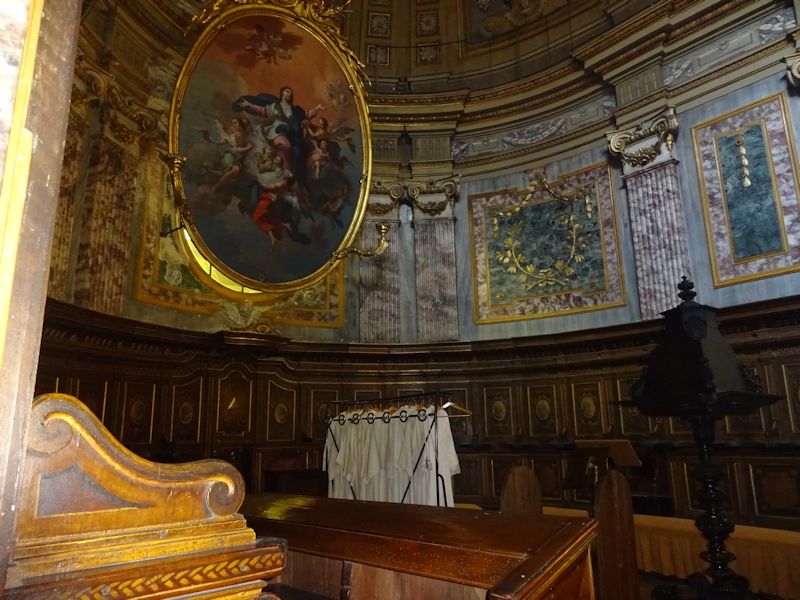
The choir area, with robes lined up, ready for anything
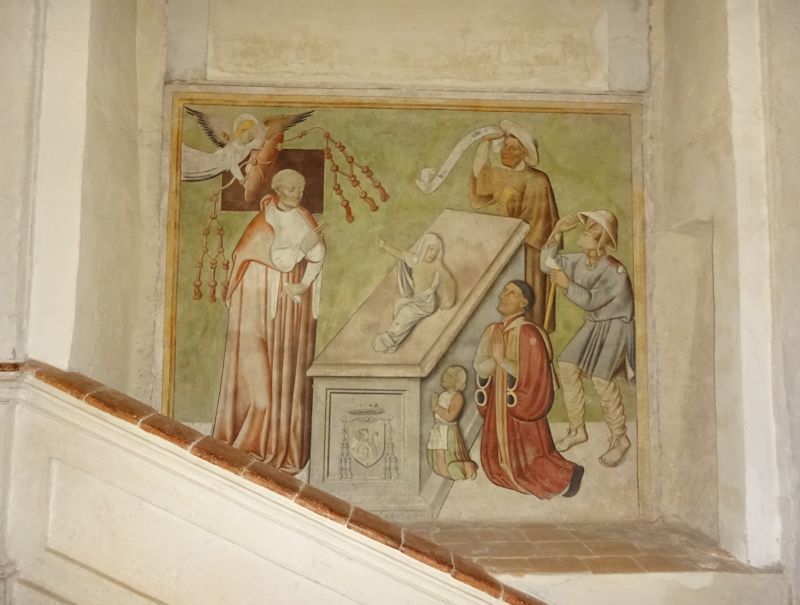
A much loved fresco from the second half of the 15th century, 'A Miracle of the Blessed Pierre de Luxembourg'. Pierre was named Bishop of Metz in 1384 by the first antipope, Clement VII (Robert of Geneva, the Butcher of Cesena), but had to bring an army along before Metz would let him in, and he didn't last long there. He died near Avignon in 1384 and insisted upon being buried in the paupers' cemetery; there ensued lots of miracles at his tomb, this presumably being one of them, whatever it is.

Down in the crypt under the chancel, dating from 11th century incarnation
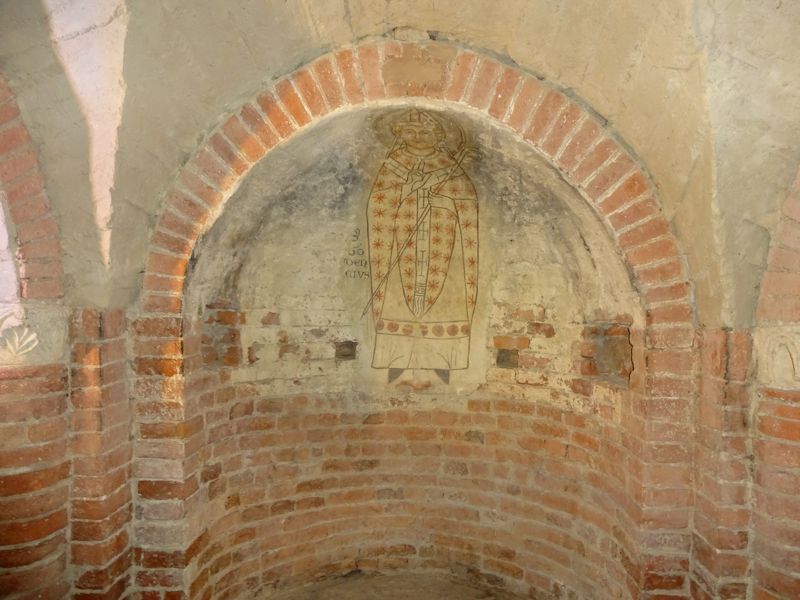
There are splendid frescoes around, but many have sorely felt the passage of time.
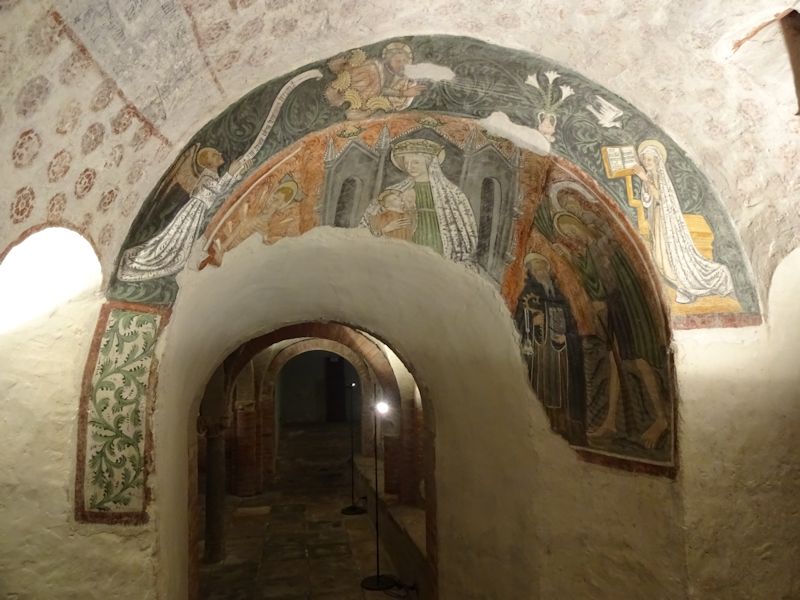
There is a "tradition" that St Patrick was consecrated as a bishop here before heading off to convert the Irish.
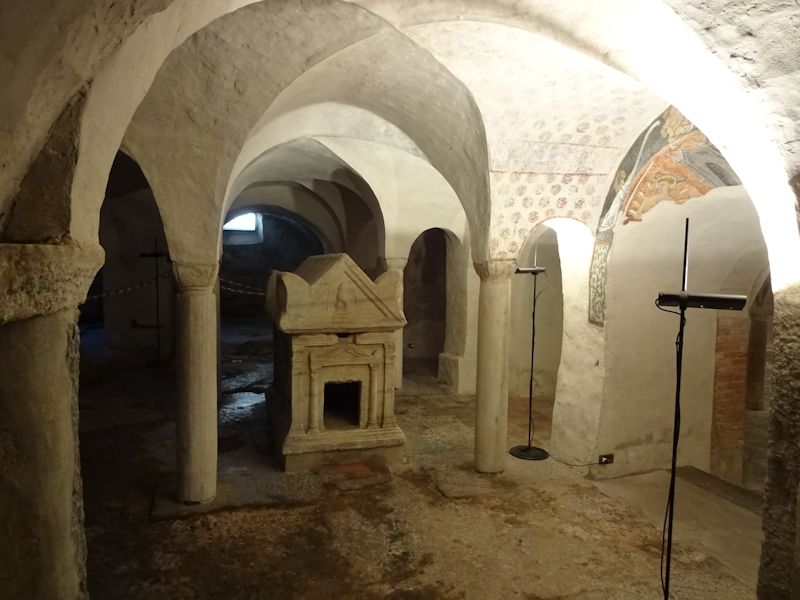
The sarcophagus is Roman but presently houses, so they say, the relics of St Bessus; but who was St Bessus? It's not straightforward. There was supposedly a Bishop of Ivrea with that name in the 700s, and there was a hermit inhabiting the alpine Val Soana in the Gran Paradiso massif, and that one's still got a sanctuary in his name at over 2000m altitude.
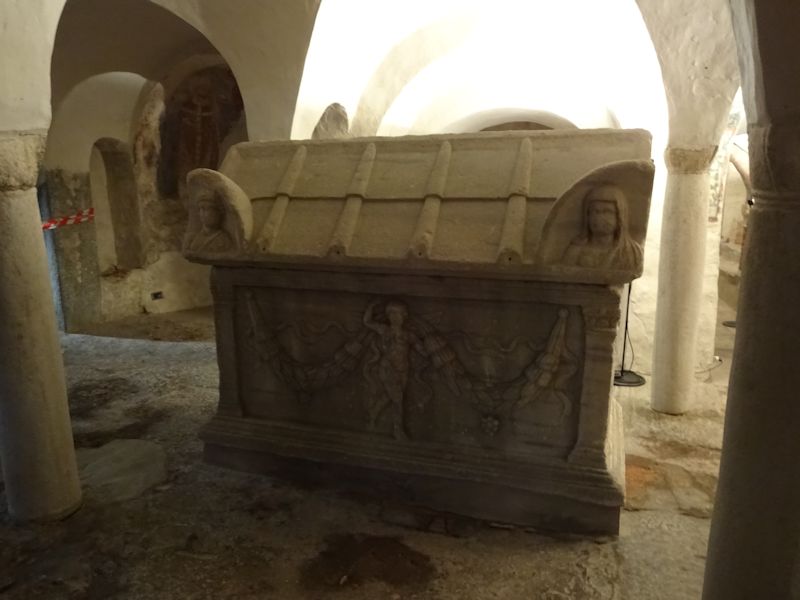
The most coherent and improbable version is that Bessus was a member of the famous Theban Legion, the Christianized Roman soldiers who were martyred in AD 286 with their leader St Maurice in the town of Agaunum, now St-Maurice in Switzerland, and that he escaped over the mountains and settled as a shepherd high up in the Aosta valleys, but he was thrown off a cliff by other shepherds because he was too good at shepherding or because he caught them stealing sheep, or cattle. But it was evidently Lord Arduin who stuck him here in this box. Besso's the protector of soldiers from combat injuries and also helps with fertility. And, fittingly, he's got two feast days.
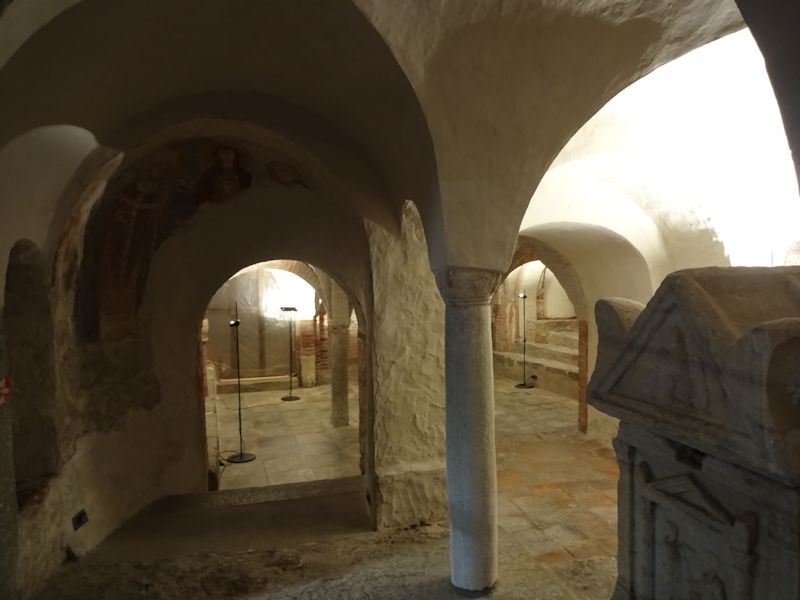
An excellent crypt; thank goodness for the lighting.

Happy fish
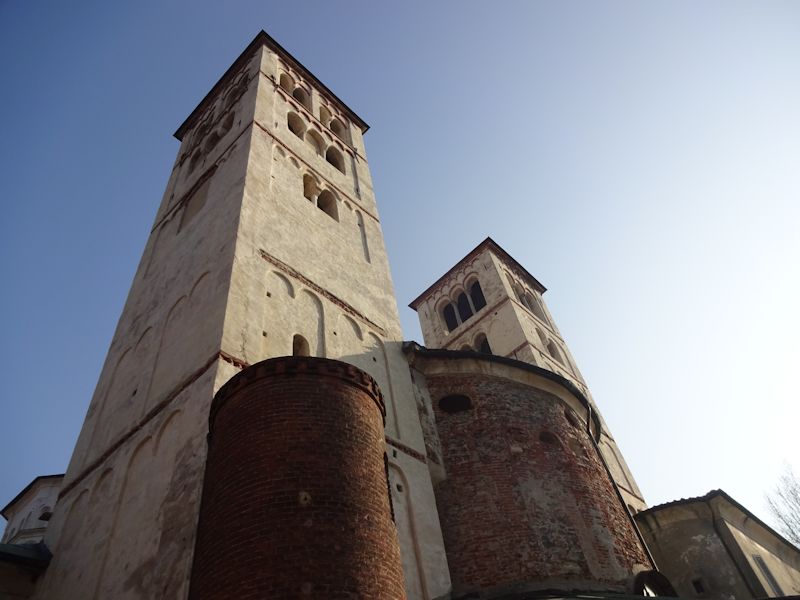
The two belltowers and apse of the church

And just next door, separated only by that alley, lie the remains of the cloister of the cathedral canons, part of the 10th century structures.
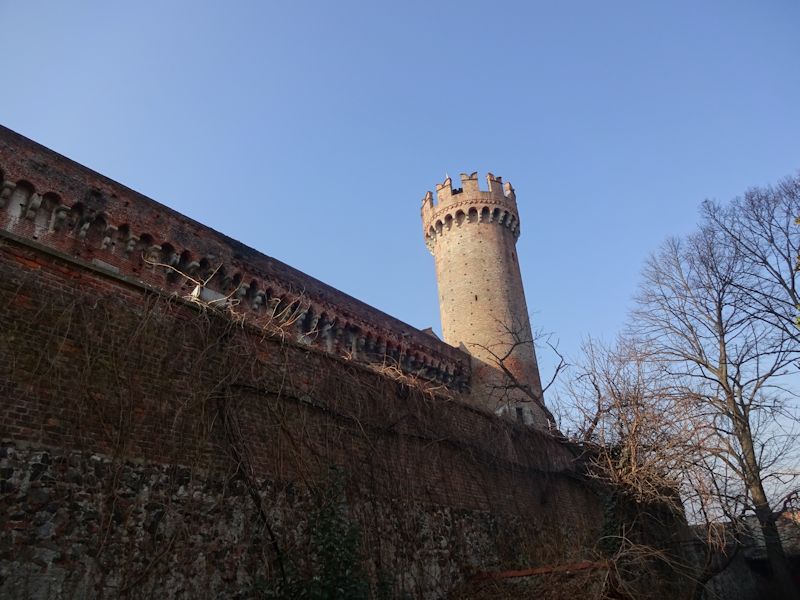
The fortress next door
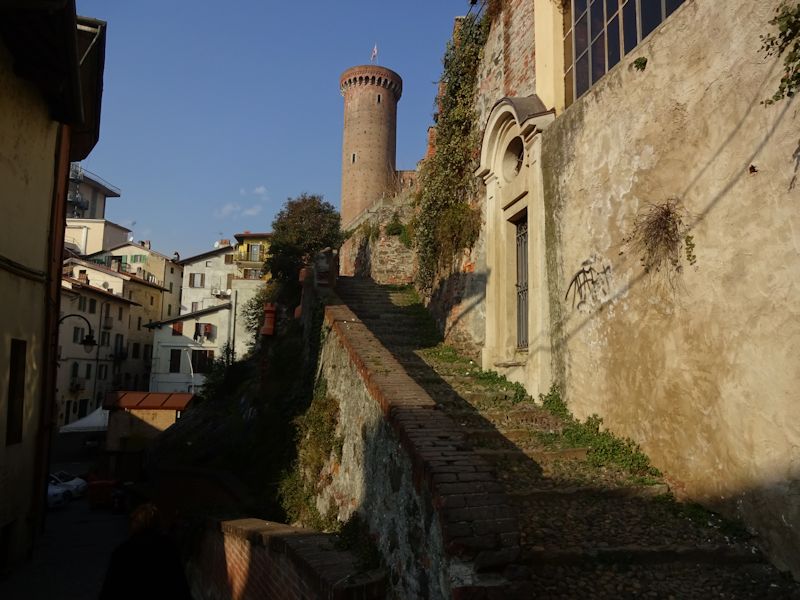
Sensibly, the fortress and cathedral dominate the city from its highest point. Now we're going downtown.
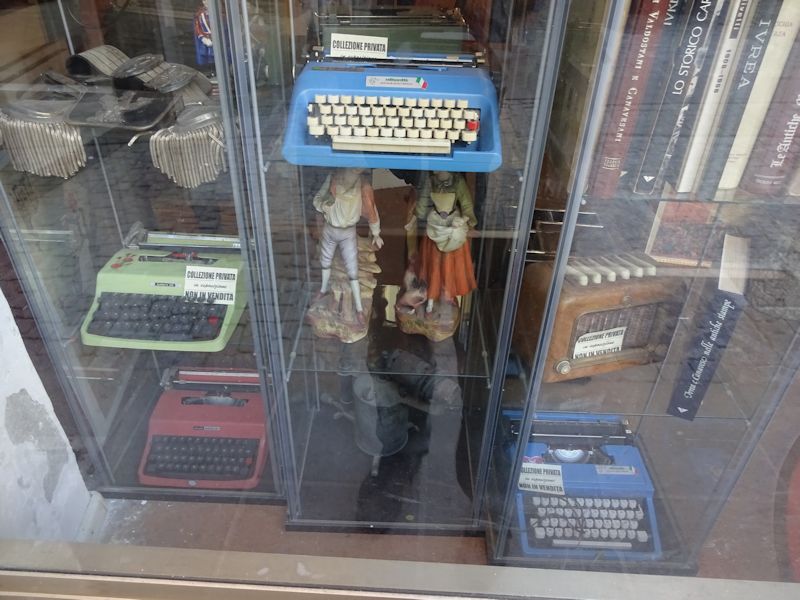
A display of Olivettis. Ivrea is the home of the Olivetti megacompany producing typewriters and other office equipment, founded in 1908.
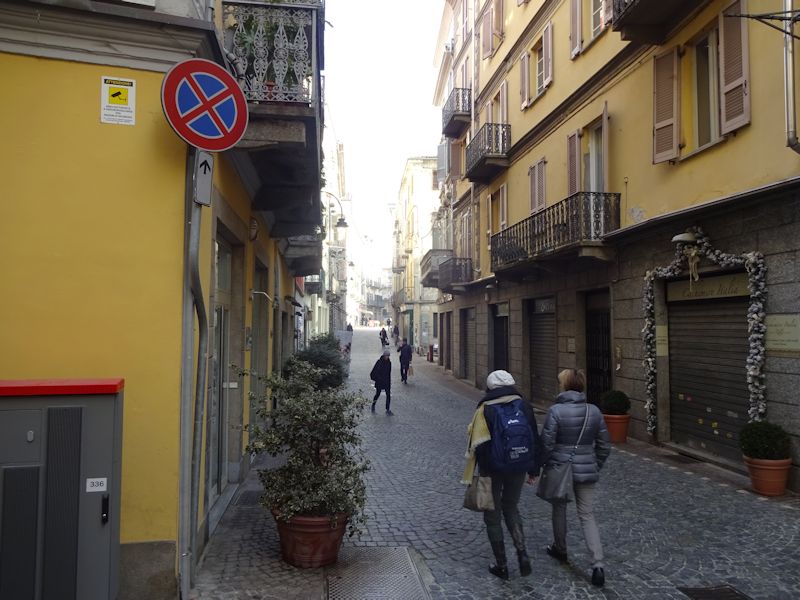
The pedestrian shopping street, the Via Palestro

A church along the Via Palestro, apparently just called one of the Parish Churches of S. Maria Assunta
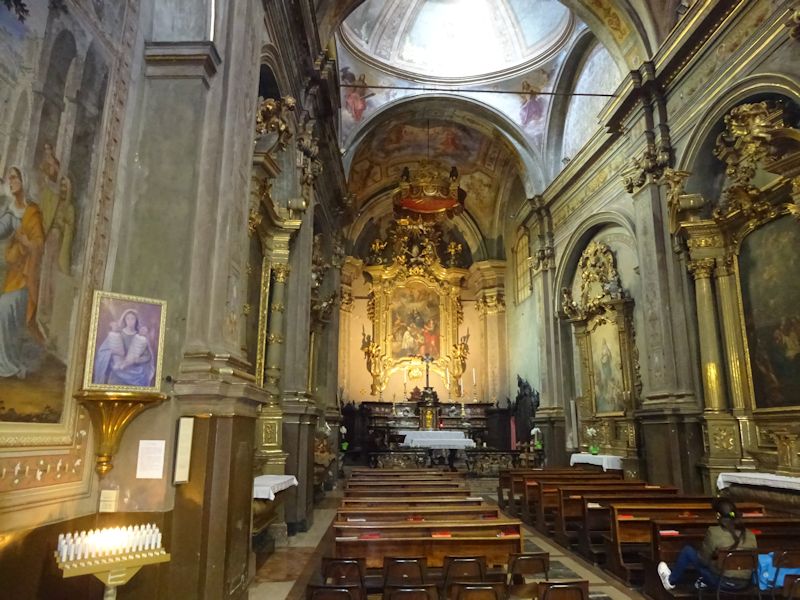
Okay

Just across the street, this is the Palazzo Civico, the city's administration. The piazza is most famous for hosting the annual Battle of the Oranges every February. The battle/festival, fought out over the ages by nine teams of 'Eporediesi' (i.e., Ivrea citizens), supposedly originated when the daughter of a local miller, after the Marquis of Monferrato in the 13th century attempted to exercise his right to sleep first with all newlywed girls, pretended to acquiesce and beheaded the evildoer. Every year a queen of the festival presides, called 'la Mugnaia' or miller's daughter, and the nine teams, commemorating the subsequent rebellion, blast away at one another with oranges.
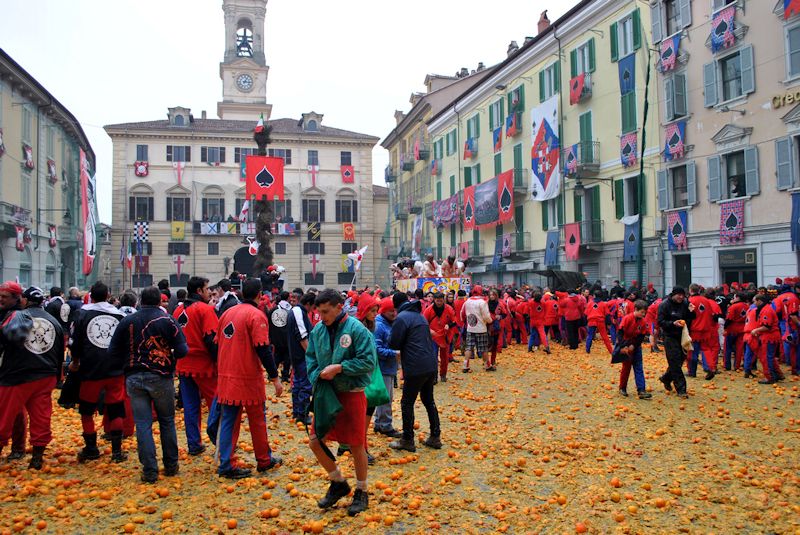
What a mess. Oranges are not grown in this region, so every year 265,000kg of oranges are imported from Sicily for the event. (Photo from www.worldfestivaldirectory.com) |

The Sunshine Gospel Choir. Jump to it -- the ticket line is already half round the block.
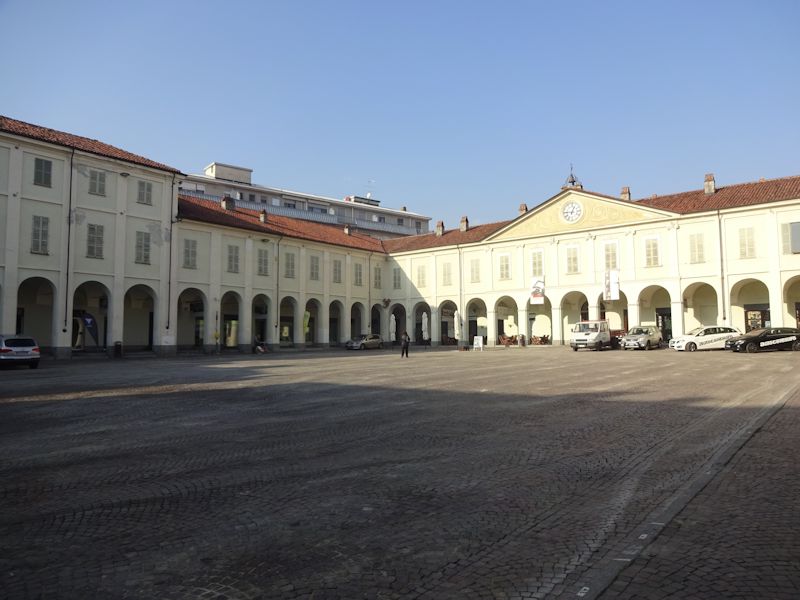
A commodious piazza at the corner of Via Palestro and Via dei Patrioti
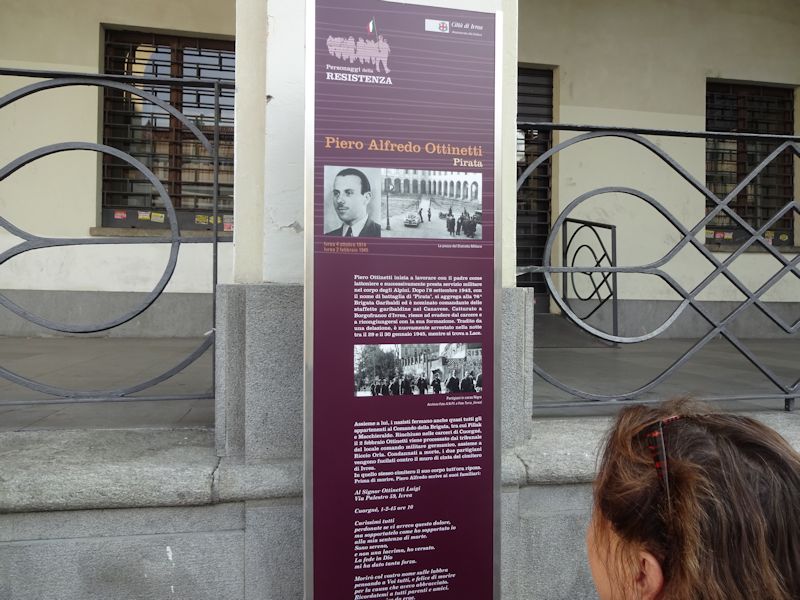
All over the city, historical displays commemorate the local resistance fighters, in the series "Personaggi della Resistenza". Mr Ottinetti, regional commander of the 76th Garibaldi Brigade, then 30 years old, was betrayed to the German military, hastily tried and shot up against a cemetery wall on 2 February 1945.

Colorful but chilly goings-on near the park and parking lot off the Corso Botta


Now we'll walk down through the beautiful park, across King Umberto Street, to the River Dora Baltea.
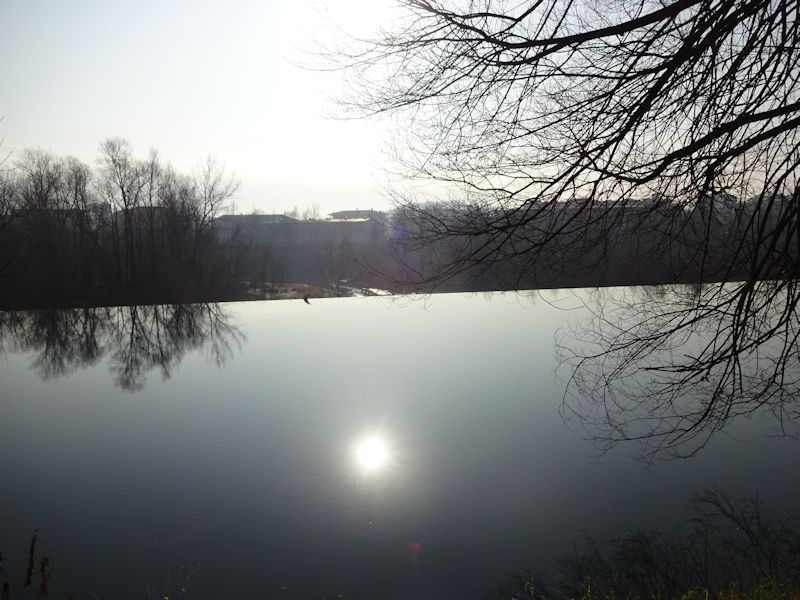
That's a river? It looks more like the Lincoln Memorial Reflecting Pool.

If we want to find out what this is about, we may need to go over to the other side of it. In any case, we're scoping the train station for tomorrow's journey, and we've been told that that would be a good place to look for it.
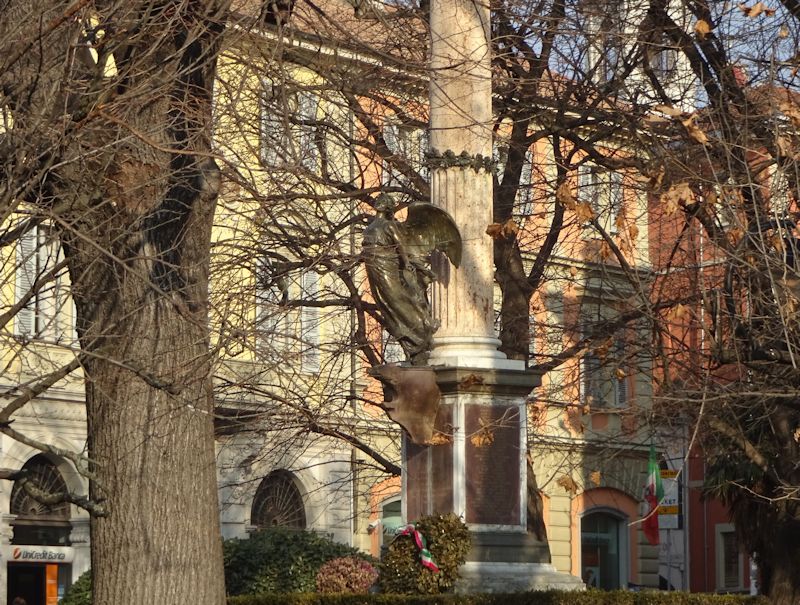
Soaring up into the tangle of branches

A stone stairway for sale. Strange.
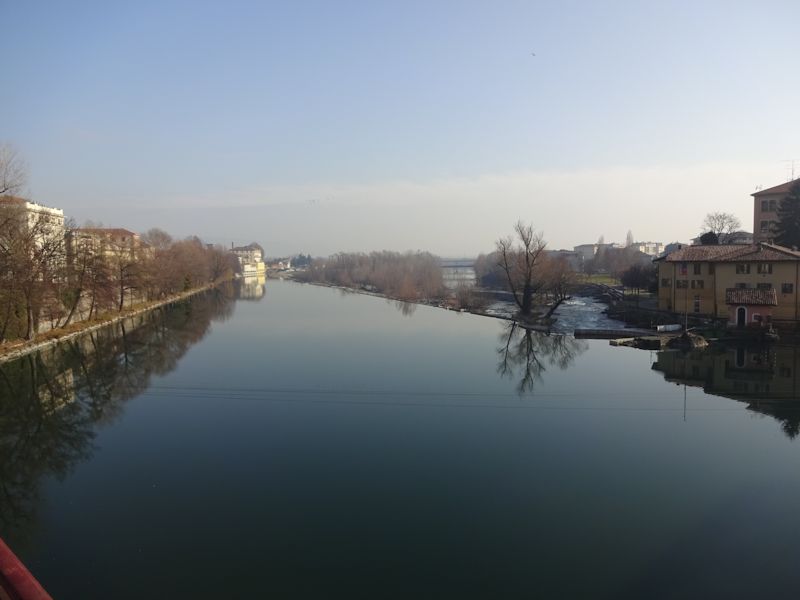
The Dora Baltea river situation is beginning to look complicated.

There's a surprise -- that's what's for sale: a whole hotel, the Albergo Diurno, tucked away under the piers. A fixer upper. The green railroad bridge is celebrated by a huge billboard as the object of an attack of sabotage by the Resistance on 24 December 1944.

The Savoyard fortress at the top of the hill
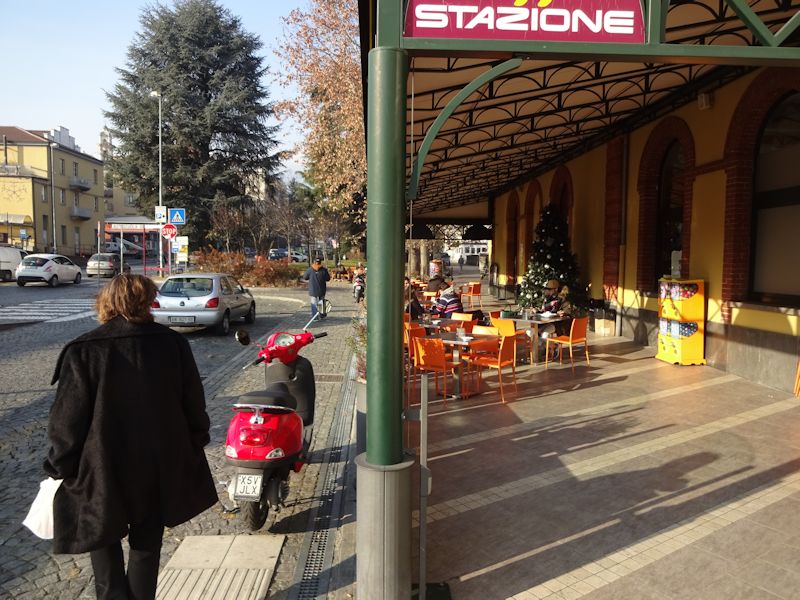
The train station, but not really. There's a commodious building on the far side of the tracks, reached by a pedestrian overpass, that's got ample free parking, all the ticket windows, and rooms for the ZAC -- Zona Attive di Cittadinanza -- activities for everybody, including free language lessons in English and Italian for refugees. All you get on this side of the tracks are the buffet de la gare (as shown), the stairs to the overpass, and the trains. Dropoffs but no parking.
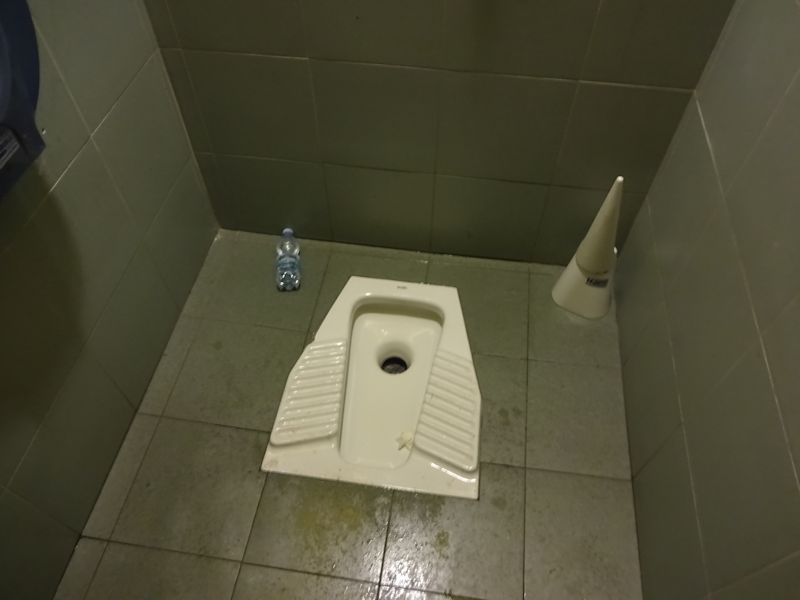
The new train station is very modern in most things, but harks back to age-old Italian traditions in others.
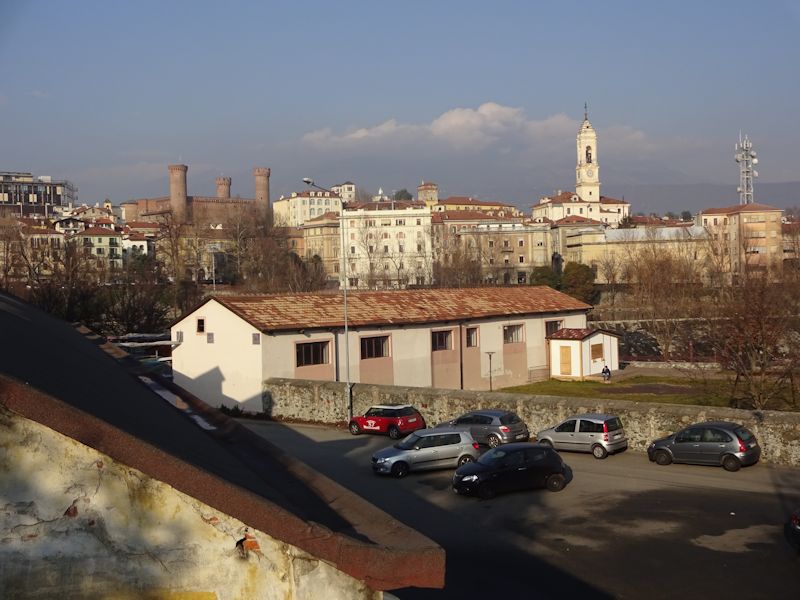
The city view, from the southern side of the river
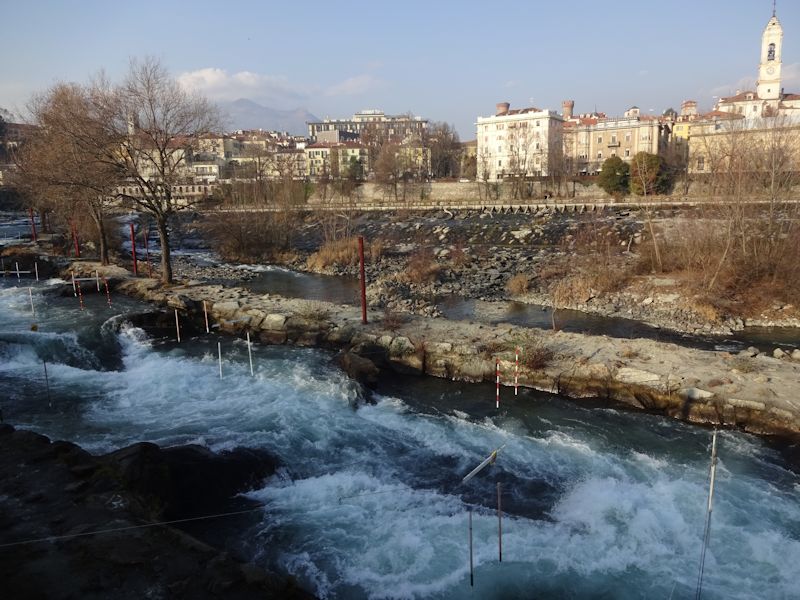
And there's the river, indeed complicated. Two channels down this side, and the reflecting pool leaks out from its farther end to rejoin this sporty diversion.
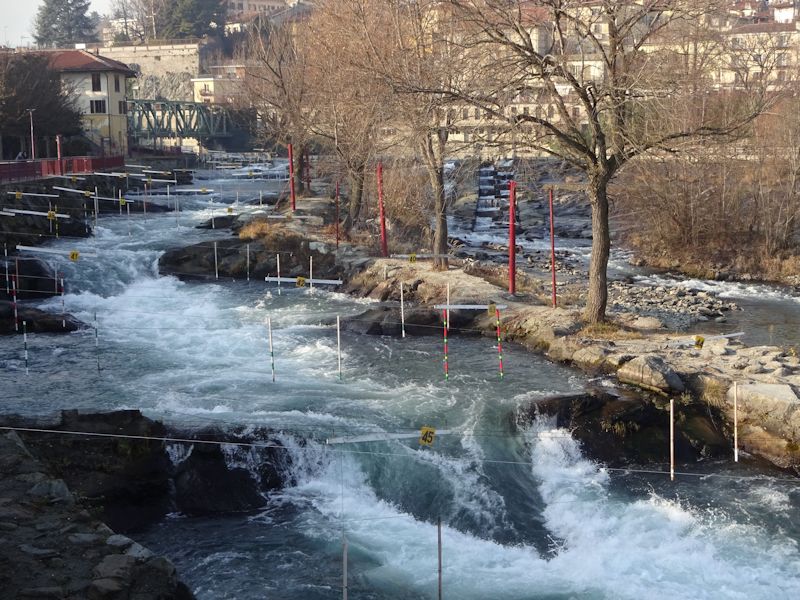
It turns out to be a kayak race course, evidently.
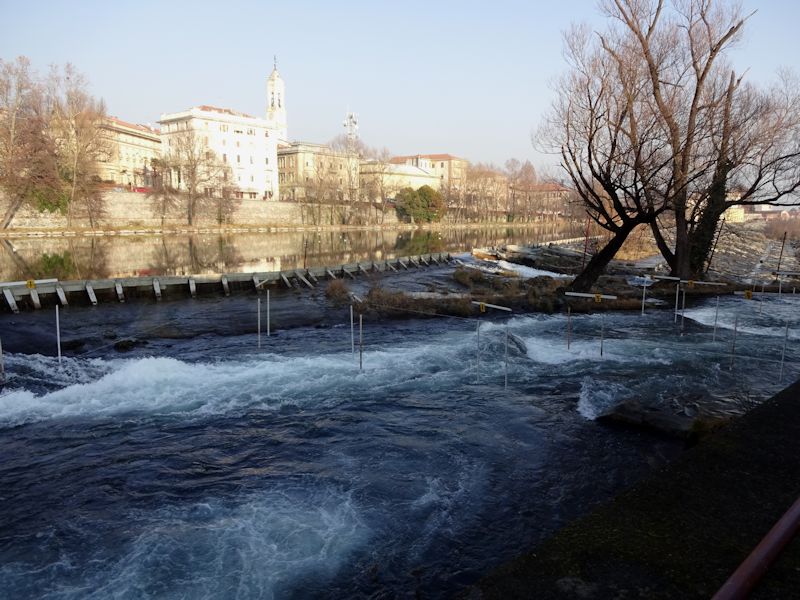
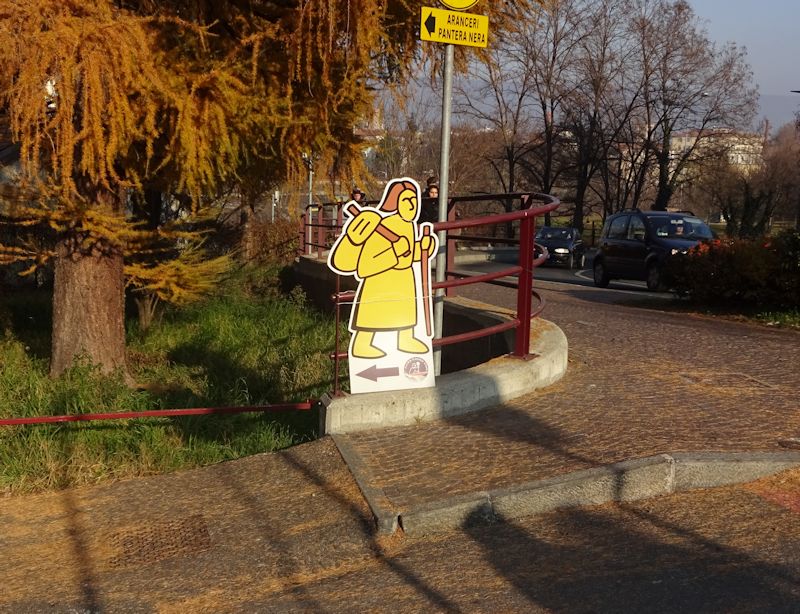
Ivrea has always been an important stop on the Via Francigena medieval pilgrimage route from northern Europe (as far north as Canterbury), through western Switzerland and over the St-Bernard Passes, through here and on to Rome, or to the ports of Bari or Brindisi bound for Jerusalem. People still walk the Via Francigena, as they do the Camino de Santiago to Santiago de Compostela in Spain, and hostels appear along the way. This hostel is overlooking the kayak racecourse.

We must leave a fair amount of time for the Bennet hypermarket (59 outlets mostly in northern Italy), possibly an odd name for an Italian chain founded by Enzo Ratti in 1964. We seem always to be filling up the sub-midsize Volvo with more Italian stuff to bring back over the Alps.

-- Could I have one of those please? There, on the top shelf.
Tomorrow: the Sabauda Gallery in Turin
 Dwight Peck's personal website
Dwight Peck's personal website





























































